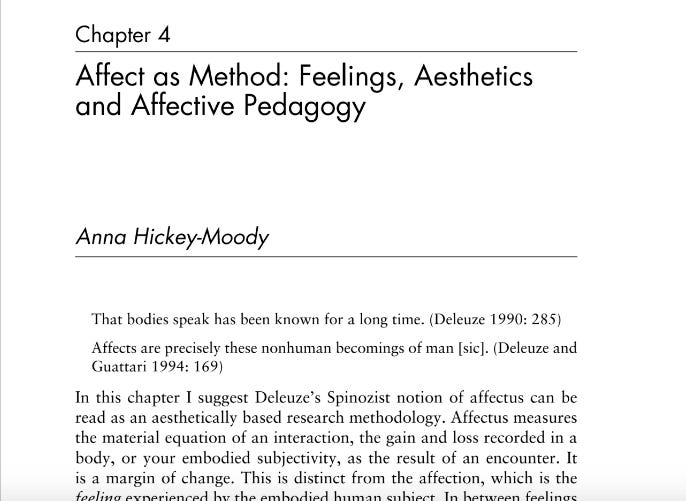Affect, art and scholarship
Earlier this month, a story that I had written with three young teachers was published in English in Australia. Its title is ‘Both Alike in Dignity’.
It is a piece of fiction, though we did try to follow the fiction writers craft:
we drew from personal experience,
we allowed our intuitions and our imaginations to shape what we created, and
we worked hard to make our story ‘ring true’, to meet some difficult to define but keenly felt criteria of verisimilitude.
There were some interesting responses to our story.
A beginning teacher wrote to me to speak of his relief at seeing in print something that made him feel that his own experiences were not isolated ones.
An experienced teacher wrote to say that he recognised certain truths in the story about the complicated relationships between mentor teachers and those learning their craft in a practicum.
Others, including one of my co-authors, have talked about the way the story changed their perceptions.
It seems that the story has produced an affect, or many different affects.
I work in a university and I am therefore involved in research. Readers of my posts will know that I wrestle with the nature of my research and especially the following questions.
Is the actual writing of a story like this one a scholarly act in itself? If so, what can we call this kind of scholarship? If not, what does it lack that scholarship has?
This morning I have read a wonderful book chapter which, while it doesn’t obviously answer my question for me, certainly contributes to the complicated but interesting mix of thoughts in my head. The book is Deleuze and Research Methodologies, and the chapter is called ‘Affect as Method: Feelings, Aesthetics and Affective Pedagogy’ by Anna Hickey-Moody.
I want to try to summarise the argument.
Affect is the imprint made on the body/mind by a body’s contact with its environment. With other bodies, in other words.
These are not necessarily human bodies. When a body is affected (made more or less powerful in its ability to act) by another body, this affect is registered in the body (as a feeling, or perhaps more as a changed state) and in the mind (as a thought, an image, an act of imagination). The body is changed by that contact. The subjectivity (or subjectivities) of each body is in continual flux as a result of this perennial process.
A work of art is such a body. And to apply this to our story:
The story is the product created by the connections and flows and interruptions generated by the four authors talking, writing, being affected by each other.
The story then has the potential to work on other bodies as the words and scenes and ideas within it are read and responded to. Memories and ideas and reactions and actions are evoked by the words.
This assemblage is what Hickey-Moody (following Deleuze and Guattari) calls a ‘bloc of sensation’ … and here I cannot stop myself from opening the book and quoting her definition:
‘A bloc of sensation is a compound of percepts and affects, a combination of shards of an imagined reality and the sensible forces that the materiality of this micro-cosmos produces’ [94].
Art, she suggests,
has the capacity to change people, cultures, politics. Art is pedagogical. [91]





